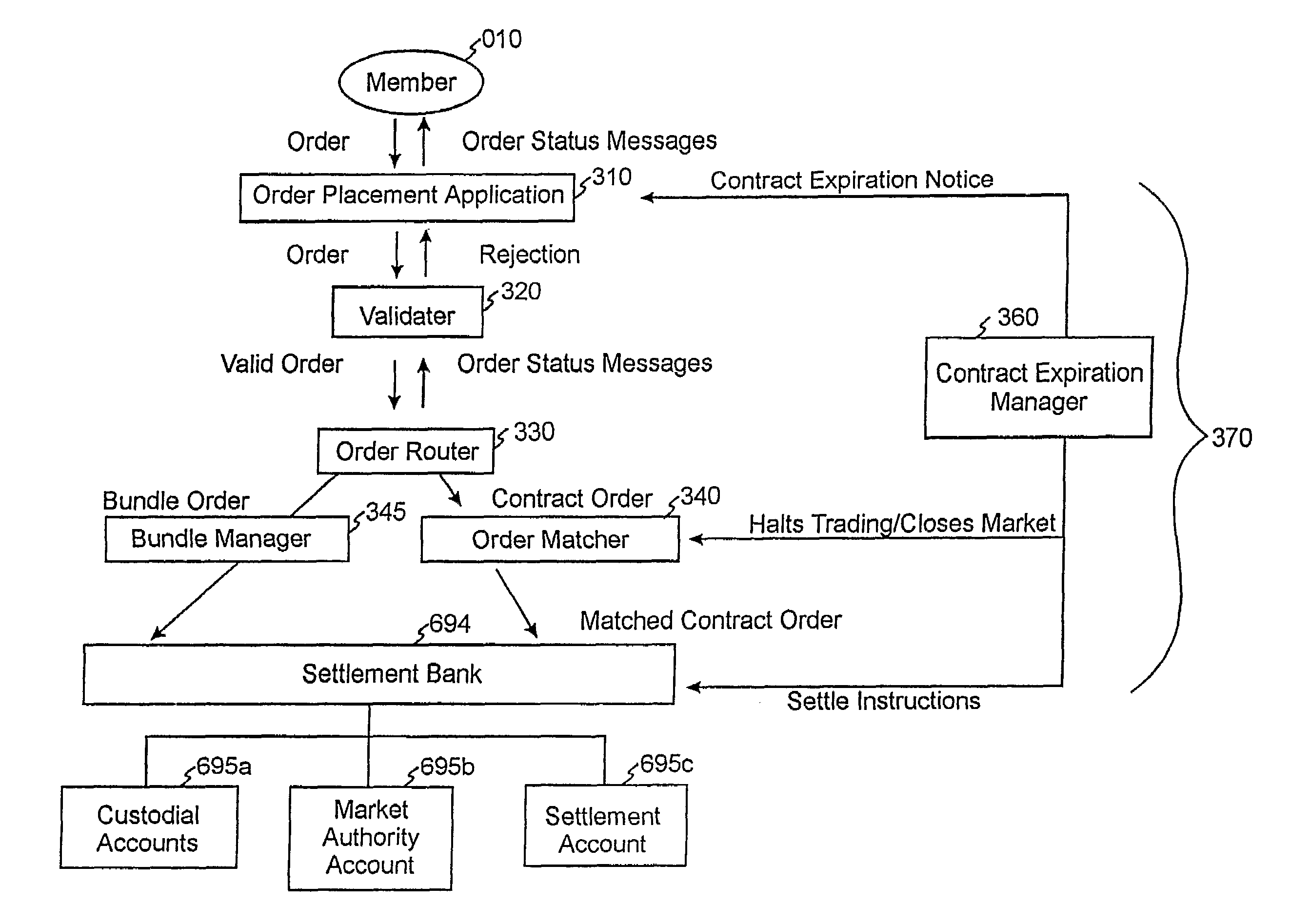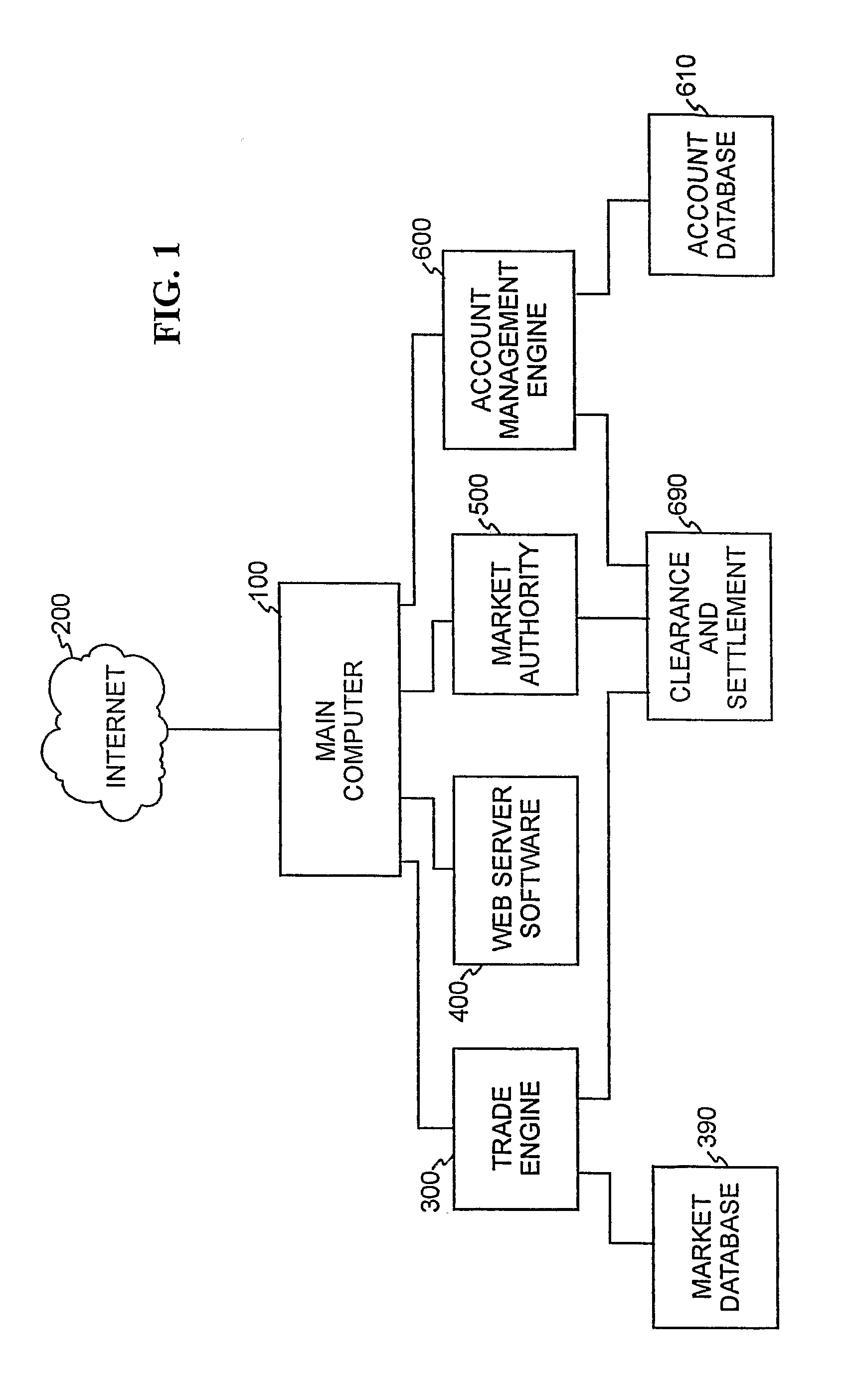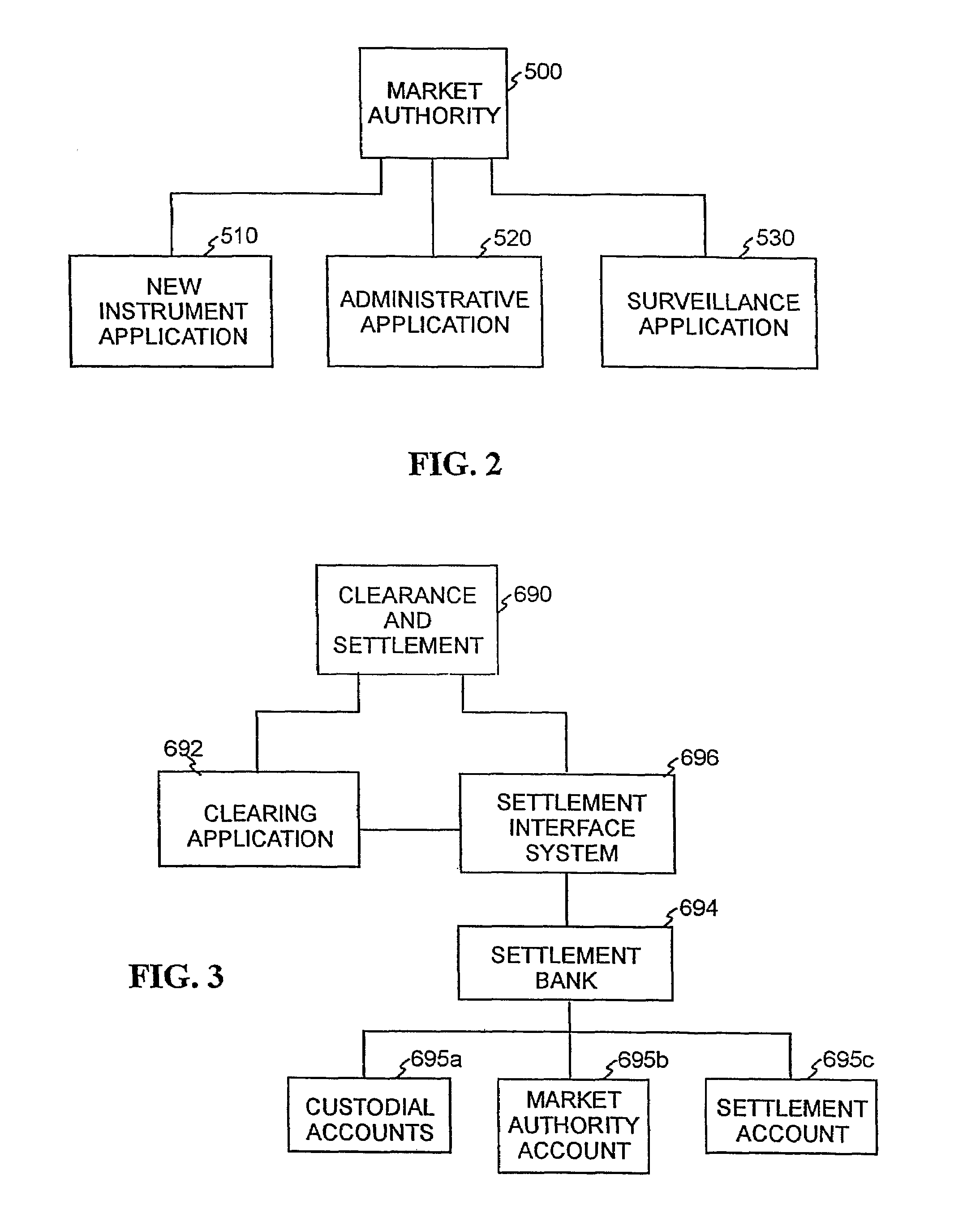Risk management contracts and method and apparatus for trading same
a technology of risk management contracts and instruments, applied in the field of risk management contracts and methods and instruments for trading same, to achieve the effect of easy expansion
- Summary
- Abstract
- Description
- Claims
- Application Information
AI Technical Summary
Benefits of technology
Problems solved by technology
Method used
Image
Examples
example 3
Risk-Sharing Management
[0390]Firms A, B, and C are insurance companies that are liable for $1.0 billion of housing reconstruction in event of an earthquake in Los Angeles and firms X, Y, and Z are housing construction companies in Los Angeles.
[0391]Firms A, B, and C are risk complements to X, Y, and Z in the following sense. While an earthquake is financially devastating for A, B, and C, they create windfall profits for X, Y, and Z. A, B, and C and X, Y, and Z could reduce their financial volatility by pooling their risks so that, regardless of whether an earthquake occurs or not, each are guaranteed a median outcome.
[0392]These six firms can hedge each other's risk by forming a private market to trade the following two contracts:[0393]Contract I which pays $10 if there is a 7.0 or greater earthquake in Los Angeles during year 2002, and $0 otherwise.[0394]Contract II which pays $10 if there is not a 7.0 or greater earthquake in Los Angeles during year 2002, and $0 otherwise.
[0395]Wh...
example 4
Egghead-Onsale Cash Flow Futures
[0406]Egghead-Onsale is worried that if things do not go well in the next quarter, it may have cash flow liquidity problems. It is too late to be doing a new SPO (in any case, management would prefer not to dilute the shares), and the interest rate that banks are demanding for debt is unattractive.
[0407]If there is no hedging and things go well (50% chance), Egghead-Onsale will have $11 million dollars of cash at the end of the quarter. If things do not go well (50% chance), Egghead-Onsale will be $1 million dollars in the red.
[0408]Egghead-Onsale would prefer to lock-in a riskless cash balance of $5 million. To do this, a Market Authority acting in accordance with the present invention can help Egghead-Onsale by constructing the following contracts:[0409]Contract I which pays $10 if Egghead-Onsale has more than $10 million dollars cash as reported on its audited financial statements for year-end 2002, and $0 otherwise.[0410]Contract II which pays $10...
example 5
Receivables Futures Example
[0414]Suppose that Sun Microsystems (“Sun”) sells hardware to Internet startups on a long term credit basis, and that it now has $1.0 billion of receivables on its books. Sun expects that about 10-20% of those receivables will not be collectible since some of its customers will declare bankruptcy. Sun would be willing to sell its $1 billion of risky receivables for $850 million cash. By designing and trading futures contracts that pay off depending on how much of the $1.0 billion is collected, a Market Authority acting in accordance with the present invention can help Sun sell its portfolio for $850 million cash.
[0415]Economic Benefits of Tradable Firm-Specific and Intra-Industry Contracts
[0416]Using the example above of Nike shoes, Nike benefits from numerous ways from the futures markets:[0417]Nike can “test” the popularity of each shoe design by first putting up, for instance, 5000 futures contracts for sale in January for “IPO” price of $25. Suppose th...
PUM
 Login to View More
Login to View More Abstract
Description
Claims
Application Information
 Login to View More
Login to View More - R&D
- Intellectual Property
- Life Sciences
- Materials
- Tech Scout
- Unparalleled Data Quality
- Higher Quality Content
- 60% Fewer Hallucinations
Browse by: Latest US Patents, China's latest patents, Technical Efficacy Thesaurus, Application Domain, Technology Topic, Popular Technical Reports.
© 2025 PatSnap. All rights reserved.Legal|Privacy policy|Modern Slavery Act Transparency Statement|Sitemap|About US| Contact US: help@patsnap.com



